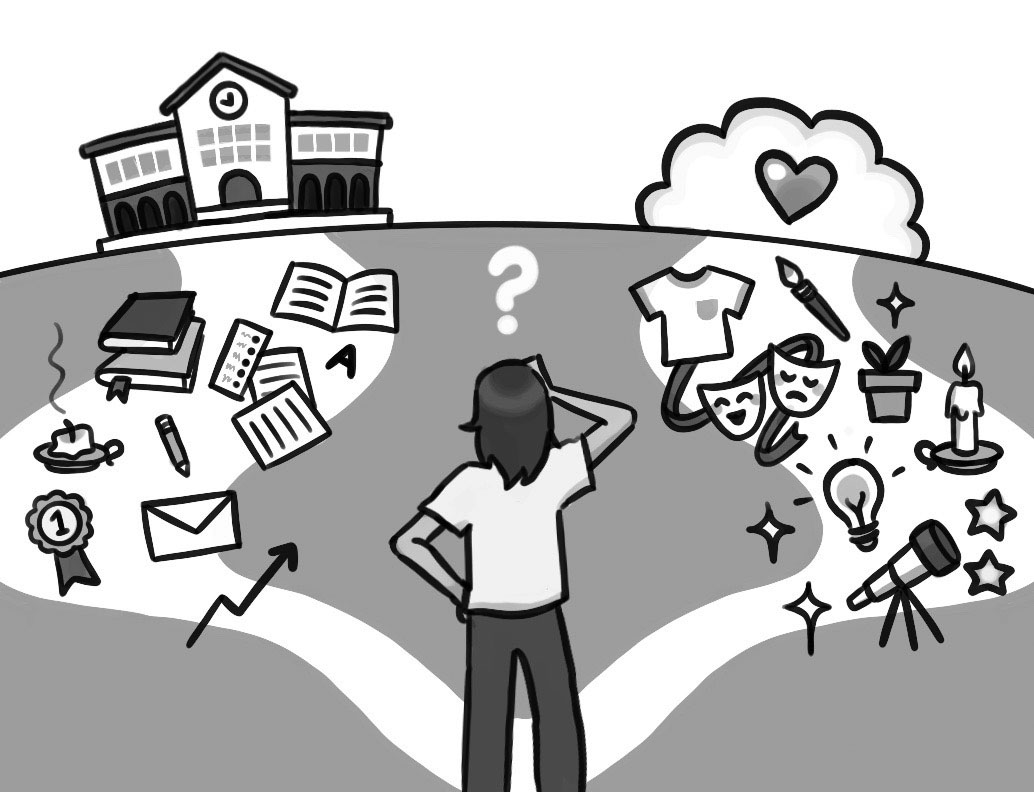The Multiethnic Inclusion and Diversity Club (MixD) hosted Radio Host and Producer Sasha Khokha to speak about her new podcast titled “Mixed Race” in Feldman Horn on May 22. Khokha is also the host of The California Report’s weekly magazine.
Khokha said she defied the norms as a mixed-race South Asian woman when she decided to marry out of love, as opposed to having an arranged marriage like the rest of her family.
“I feel like I really broke the mold,” Khokha said. “Especially in Northern California, there’s so many Indian engineers who work in Silicon Valley, so many people are having mixed kids and it’s just not that uncommon anymore. Being able to find community is such an advantage for people today versus when I was growing up.”
Khokha said having a space for mixed-race students to discuss their identities is important for every school.
“I still think there’s a lot to talk about [regarding being mixed-race],” Khokha said. “There’s a reason [Harvard-Westlake] has a mixed club. It’s not like the issues that I faced are over. There’s still a need for space to have community.”
Khokha said mixed identities are often overlooked by society.
“Generally speaking, when we discuss celebrities, people are usually described as just being one race,” Khokha said. “And even though things have been changing, to be more accepting to people who are going to be of mixed race or multiple cultures, we still describe Obama as Black, [but] not being Black and white.
MixD member Emma Tseng ’26, who is Jewish and Chinese, said being mixed-race gives her a distinct perspective.
“I am very proud of my mixed identity,” Tseng said. “To me, being mixed means getting to have multiple cultures, histories and values that give me a unique perspective on the world. For example, I get to be part of both Rosh Hashanah and Chinese New Year celebrations, which has introduced me to how different cultures celebrate and experience joy.”
Tseng said it is important to acknowledge and be mindful of the fact that people can identify with multiple ethnicities and cultures.
“Some mixed people are overlooked in society because many people do not understand that people can have multiple identities all at once, and being one thing does not negate being another,” Tseng said. “Mixed identities are not really normalized because oftentimes society wants to define a mixed person as one race or ethnicity based on stereotypes or other implicit biases. However, I think that increased representation for mixed authors, actors and influencers will help people understand the mixed experience.”
MixD leader Nilufer Mistry Sheasby ’24 said Khokha empowered her to be more open about her mixed identity.
“I was so interested to hear about Khokha’s story, and it inspired me to not be so afraid of embracing my culture,” Mistry Sheasby said. “My experience being mixed at school definitely has been interesting. I hope that the mixed identity gets stronger because the community’s not as active as I would hope, but I think we’re getting there. Mixed people actually do suffer mental health impacts from not feeling accepted by any community, so we should work to combat that.”
































